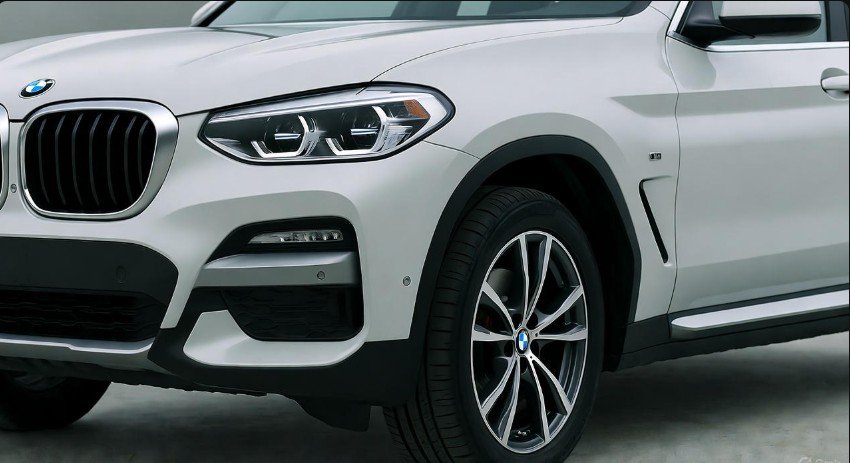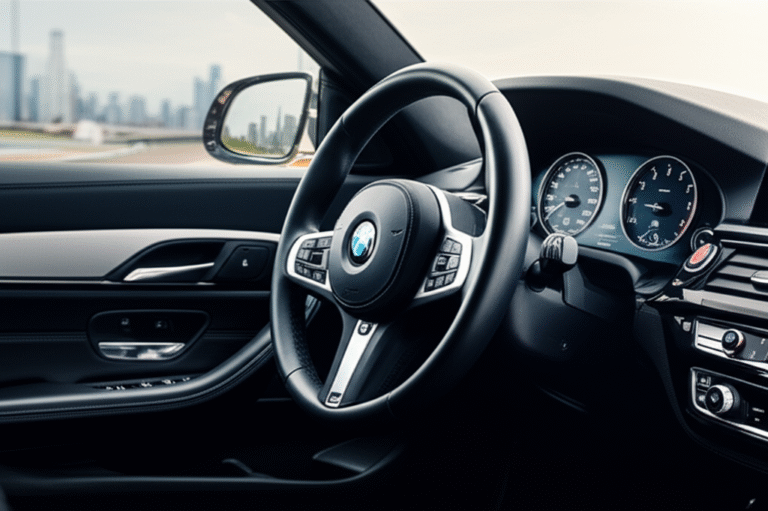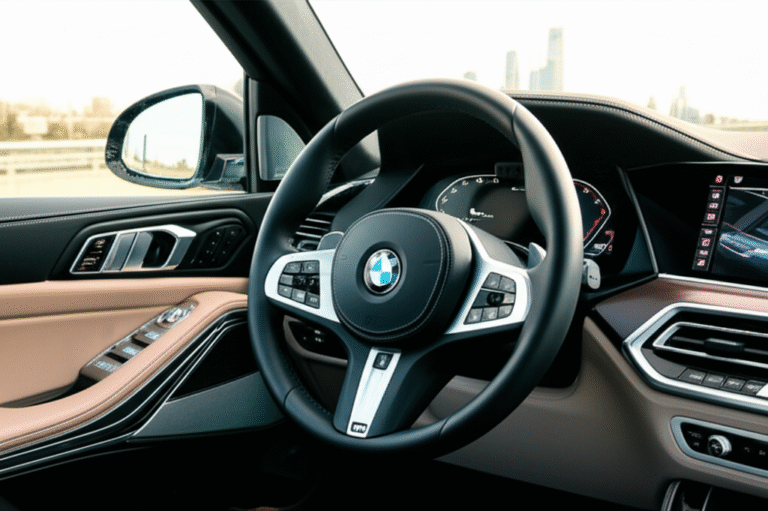BMW X3 Tyre Size: 5 Essential Specs

BMW X3 tyre size is crucial for performance and safety. Knowing the 5 essential specs ensures you choose the correct size for optimal handling, fuel efficiency, and a smooth ride.
Key Takeaways
- Identify your specific BMW X3 model year for accurate tyre fitment.
- Understand tyre sidewall markings for size, load, and speed ratings.
- Check for recommended tyre pressure to maintain safety and efficiency.
- Consider seasonal tyre needs for varied U.S. driving conditions.
- Consult your owner’s manual for definitive BMW X3 tyre specifications.
Your BMW X3 is a marvel of German engineering, designed for both robust performance and everyday comfort. A critical component that directly impacts how your X3 drives, handles, and even how safely it stops is its tyres. But navigating the world of tyre sizes can feel like deciphering a secret code. Many drivers wonder if they’re using the right tyres or what those numbers on the sidewall actually mean. This guide breaks down the essential BMW X3 tyre size specifications you need to know. We’ll make it simple, so you can confidently choose the perfect tyres for your luxury SAV. Let’s get you rolling with clarity.
Decoding Your BMW X3 Tyre Size: What You Need to Know
Understanding your BMW X3 tyre size is more than just a routine check; it’s fundamental to your vehicle’s safety, performance, and longevity. The correct tyre size ensures that your X3’s sophisticated systems, like traction control and ABS, function as intended. It also directly influences fuel economy, braking distance, and ride comfort. When you select the wrong tyre size, you risk uneven wear, compromised handling, and potential damage to your vehicle’s driveline. Here, we’ll demystify the markings on your tyres and guide you to the precise specifications for your BMW X3.
BMW X3 Tyre Size: The 5 Essential Specs Explained

When you look at the sidewall of your BMW X3’s tyre, you’ll see a string of numbers and letters that might seem daunting at first. However, each part of this code provides vital information about the tyre’s dimensions and capabilities. Knowing these five essential specifications will empower you to make informed decisions when it’s time for a tyre change or upgrade.
1. Tyre Width (Section Width)
The first number in the tyre size designation indicates the tyre’s section width in millimeters. For example, in a size like 245/45R19, the ‘245’ represents the width of the tyre from one sidewall to the other in millimeters. A wider tyre generally offers better grip and handling, especially in dry conditions, but can sometimes result in slightly increased fuel consumption and a harsher ride. Conversely, a narrower tyre might be more fuel-efficient and perform better in wet or snowy conditions due to a more concentrated contact patch.
2. Aspect Ratio (Tyre Profile)
The second number is the aspect ratio, expressed as a percentage. In our example ‘245/45R19′, the ’45’ means the tyre’s sidewall height is 45% of its width. This is often referred to as the tyre’s profile. A lower aspect ratio (e.g., 40, 35) indicates a shorter sidewall, often found on performance-oriented vehicles. Shorter sidewalls reduce sidewall flex, leading to sharper handling and better responsiveness. However, they also mean less cushioning, potentially making the ride firmer and increasing the risk of rim damage from potholes. A higher aspect ratio provides a more comfortable ride and better protection for the wheels.
3. Radial Construction
The letter ‘R’ in the tyre size code signifies that the tyre is of radial construction. This is the standard for almost all modern passenger vehicles, including the BMW X3. Radial tyres have their plies running perpendicular to the direction of travel, which improves ride comfort, fuel efficiency, and tread life compared to older bias-ply designs. You might occasionally see a ‘Z’ or ‘ZR’ which indicates a tyre designed for very high speeds.
4. Wheel Diameter
The final number in the sequence, preceded by ‘R’, is the diameter of the wheel (rim) that the tyre is designed to fit, measured in inches. In ‘245/45R19′, the ’19’ means the tyre is intended for a 19-inch wheel. It’s crucial that this number matches your vehicle’s wheel size. Using a tyre with the wrong diameter will not fit your wheel and could lead to serious safety issues. The BMW X3 has been offered with various wheel sizes across different model years and trim levels, commonly ranging from 17 to 21 inches.
5. Load Index and Speed Rating
These are critical safety specifications often found on the sidewall after the tyre size. The Load Index is a numerical code that indicates the maximum weight each tyre can support when properly inflated. For example, a load index of 98 means the tyre can carry 1,709 pounds (775 kg). The Speed Rating is an alphabetic code that indicates the maximum speed at which the tyre can sustain its load. For instance, ‘V’ typically signifies a maximum speed of 149 mph (240 km/h).
It is imperative that replacement tyres have a load index and speed rating equal to or higher than the original equipment tyres. Using tyres with lower ratings can lead to tyre failure, especially under demanding driving conditions. Your BMW X3 owner’s manual will provide the specific load index and speed rating requirements for your vehicle.
BMW X3 Tyre Size Chart by Generation
The BMW X3 has evolved over the years, and with each generation, there can be variations in recommended tyre sizes. Knowing your X3’s generation and model year is key to selecting the correct tyres. Here’s a general overview, but always consult your owner’s manual for your specific vehicle’s definitive specifications.
| BMW X3 Generation (Model Years) | Common Front Tyre Sizes | Common Rear Tyre Sizes | Common Wheel Diameter (Inches) |
|---|---|---|---|
| 1st Gen (E83: 2003–2010) | 235/55R17, 235/50R18 | 235/55R17, 255/45R18 | 17, 18 |
| 2nd Gen (F25: 2010–2017) | 245/55R17, 245/50R18, 245/45R19 | 245/55R17, 245/50R18, 275/40R19 | 17, 18, 19 |
| 3rd Gen (G01: 2017–Present) | 245/50R19, 245/45R20, 245/40R21 | 245/50R19, 275/40R20, 275/35R21 | 19, 20, 21 |
| M Models (e.g., X3 M Competition) | 255/40R21 | 265/40R21 | 21 |
Note: This table provides typical sizes. Your specific BMW X3 may have different options based on trim level, optional packages, or performance variants. Always verify with your owner’s manual.
Why Proper Tyre Pressure Matters for Your BMW X3
Tyre pressure is one of the most overlooked aspects of car maintenance, yet arguably one of the most critical. Maintaining the correct tyre pressure for your BMW X3 directly impacts safety, tread life, fuel efficiency, and ride comfort. Underinflated tyres can lead to poor handling, increased wear on the outer edges of the tread, and a higher risk of blowouts. Overinflated tyres can result in a harsher ride, reduced traction, and accelerated wear on the center of the tread.
Your BMW X3 is equipped with a Tyre Pressure Monitoring System (TPMS) to alert you if pressure drops too low. However, you should still check your tyre pressures manually at least once a month and before long journeys. The recommended tyre pressure for your X3 can usually be found on a sticker located on the driver’s side doorjamb, in the glove compartment, or in your owner’s manual. It is typically specified for both front and rear tyres, and sometimes varies based on load (e.g., normal load vs. full load with passengers and luggage).
For example, a common recommendation for a standard BMW X3 might be around 32-35 PSI (pounds per square inch) for normal operation, but this can vary significantly. Always refer to the placard on your vehicle for the most accurate information.
Choosing Tyres: Summer vs. Winter vs. All-Season for Your BMW X3
The United States experiences a wide range of climates, and the type of tyre you choose for your BMW X3 should reflect your typical driving conditions. The three main categories are Summer tyres, Winter tyres, and All-Season tyres.
- Summer Tyres: These are designed for optimal performance in warmer temperatures (above 7°C or 45°F). They often have a harder rubber compound and a tread pattern optimized for dry and wet grip on warm roads. They are not suitable for cold temperatures, snow, or ice.
- Winter Tyres (Snow Tyres): Essential for drivers in regions with cold winters, snow, and ice. Winter tyres feature a softer rubber compound that remains flexible in freezing temperatures and a more aggressive tread pattern with biting edges to provide superior traction on snow and ice. They are crucial for safety in sub-freezing conditions. You can learn more about the importance of winter tyres from resources like the National Highway Traffic Safety Administration (NHTSA) on safe winter driving.
- All-Season Tyres: These are a compromise, designed to offer acceptable performance in a variety of conditions, from moderate heat to light snow. They are a popular choice for drivers in areas with mild winters or where extreme weather is infrequent. While convenient, they do not offer the same level of performance as dedicated summer or winter tyres in their respective extreme conditions.
For many BMW X3 owners across the USA, a good set of All-Season tyres provides a balanced solution. However, if you live in the Northeast, Midwest, or mountainous regions, investing in a set of dedicated winter tyres and switching them out seasonally (typically in late fall and early spring) can significantly enhance safety and performance.
Pro Tip:
When changing seasonal tyres, it’s a great time to inspect your brakes, suspension components, and ensure your spare tyre (if equipped) is properly inflated and ready for emergencies. Also, consider getting your wheels balanced when you get new tyres fitted.
Understanding Wheel and Tyre Wear Patterns
The way your BMW X3’s tyres wear down can tell you a lot about their condition and potential alignment or pressure issues. Observing these patterns is a key part of proactive maintenance.
| Wear Pattern | Potential Cause(s) | What to Do |
|---|---|---|
| Centre Wear | Tyre overinflation. | Check and adjust tyre pressure to the manufacturer’s recommendation. |
| Edge Wear (Both Edges) | Tyre underinflation. | Check and adjust tyre pressure. Regularly monitor pressure. |
| One-Sided Edge Wear | Improper wheel alignment (camber or toe). | Have your wheel alignment checked by a qualified technician. |
| Feathering (Scalloped or Spoon-Shaped Wear) | Misalignment or worn suspension components. | Seek professional inspection for alignment and suspension. |
| Patchy or Spotty Wear | Tyre imbalance, underinflation, or hard braking. | Balance your tyres, check pressure, and practice smooth braking. |
Regularly inspecting your tyres for these wear patterns can help you catch problems early, preventing premature tyre wear and ensuring your BMW X3 handles as safely and efficiently as designed. Many tyre shops offer free tread wear inspections.
Where to Find Your BMW X3’s Official Tyre Specifications
While this guide provides comprehensive information, the most authoritative source for your specific BMW X3 tyre size, load index, and speed rating is always your vehicle’s documentation. Here’s where you can typically find them:
- Owner’s Manual: This is the primary document for all vehicle specifications. Look in the sections related to maintenance, wheels, or tyres.
- Driver’s Side Doorjamb Sticker: Most vehicles have a sticker inside the driver’s door jamb that lists the original tyre size and recommended inflation pressures.
- Glove Box Door: Some manufacturers place tyre information here.
- Fuel Filler Door: Less common, but some vehicles might have it here.
If you’re having trouble locating this information or are unsure about interpreting it, don’t hesitate to contact your local BMW dealership or a reputable tyre professional. They can access official BMW databases to confirm the correct specifications for your X3.
Frequently Asked Questions About BMW X3 Tyre Size
Q1: Can I put a different size tyre on my BMW X3?
It’s generally recommended to stick to the OE (Original Equipment) tyre sizes specified by BMW for your X3. Deviating significantly can affect speedometer accuracy, ABS and DSC systems, and ride comfort. If you opt for a different size, ensure the overall tyre diameter remains as close as possible to the original to avoid these issues. Always consult a professional before changing tyre sizes.
Q2: How often should I replace the tyres on my BMW X3?
Tyres typically need replacement every 3 to 5 years, or when the tread depth reaches 4/32nds of an inch (or the wear indicators are exposed). However, this can vary greatly depending on driving habits, road conditions, and the quality of the tyres. Regular inspections by a professional are advised.
Q3: What does the number “XL” mean on some BMW X3 tyres?
The “XL” marking on a tyre indicates that it is an “Extra Load” tyre. These tyres are designed to carry a higher load capacity than standard tyres of the same size. This is common on heavier vehicles like SUVs and performance cars such as some BMW X3 models, especially those with larger wheel sizes.
Q4: Do I need to replace all four tyres at once on my BMW X3?
Yes, it is highly recommended to replace all four tyres at the same time, especially on an all-wheel-drive vehicle like the BMW X3. Mismatched tread depths can put undue stress on the drivetrain components (like the differentials and transfer case) and affect the vehicle’s stability and handling.
Q5: What are run-flat tyres and does my BMW X3 have them?
Run-flat tyres are designed to continue operating for a limited distance at reduced speeds even after a loss of all pressure. Many BMW X3 models come equipped with run-flat tyres as standard. They have reinforced sidewalls that support the vehicle’s weight without air. If your X3 came with run-flats, it likely does not have a spare tyre. If you choose to switch to non-run-flat tyres, you will need to carry a spare tyre kit.
Q6: How do different wheel sizes affect my BMW X3’s tyre choice?
Larger wheel diameters typically mean smaller aspect ratio tyres to maintain a similar overall tyre diameter. For example, a 20-inch wheel will use a tyre with a lower profile (e.g., 245/45R20) compared to a 17-inch wheel (e.g., 245/55R17). Larger wheels often provide sharper handling but can lead to a firmer ride and a greater risk of wheel damage from impacts.
Ensuring Optimal Performance and Safety with the Right Tyres
Selecting the correct BMW X3 tyre size is a fundamental aspect of maintaining your vehicle’s performance, safety, and comfort. By understanding the essential specifications—width, aspect ratio, construction, wheel diameter, load index, and speed rating—you can confidently choose tyres that meet or exceed your X3’s requirements. Always refer to your owner’s manual for the definitive specifications tailored to your specific model year and trim. Remember that proper tyre pressure and choosing the right tyre type for your climate are also crucial for a superior driving experience. With the right knowledge and care, your BMW X3 will continue to offer the exceptional driving dynamics it’s known for, mile after mile.




